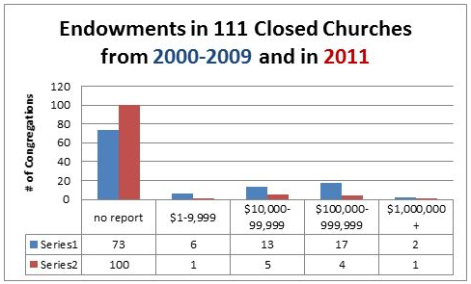 Reverend David Schoen, Temporary Minister for Church Legacy and Closure, Church Building and Loan Fund, Local Church Ministries – United Church of Christ. For more information on the 111 Closed Congregations in the UCC, please contact him at dschoen@ucc.org. For more closure and legacy information see Church Legacy and Closure Resource.
Reverend David Schoen, Temporary Minister for Church Legacy and Closure, Church Building and Loan Fund, Local Church Ministries – United Church of Christ. For more information on the 111 Closed Congregations in the UCC, please contact him at dschoen@ucc.org. For more closure and legacy information see Church Legacy and Closure Resource.
Recently, I hiked through an old growth forest in the Pacific Northwest enjoying the beautiful tall Douglas Firs and Western Red Cedars as well as the lush forest floor of green moss, ferns and more. On the forest floor there were the trunks of fallen giant trees covered with many forest plants including new trees growing on the top of the fallen remains. Those fallen tree trunks are called nurse logs. When a big tree falls it provides a platform for new life. Hemlock and spruce seedlings unable to survive on the tangled forest floor absorb minerals, moisture, and warmth from the nurse log. Plants growing on nurse logs do better than plants on the forest floor because they are closer to sunlight and feed on rich nurse log nutrients.
After my hike through the forest, I reflected on how closing congregations are often like nurse logs. Closing churches faithfully leave a missional legacy that resources the growth of many other ministries and the planting of new congregations.
In his book, Beyond Resistance, Rev. John Dorhauer, UCC General Minister and President, wrote about the closure and death of Holy Ghost UCC, the oldest church in the St. Louis Association. “I will never forget the Sunday morning we gathered for the last time in the Sanctuary of Holy Ghost. Before we would ritually decommission the church and offer words of closure (the Moderator) carefully took time and, one by one, invited guests forward. To a children’s home built to care for orphans she gave a check. To a woman’s abuse shelter the same, as well as to the camp run by the Conference, and to the local Habitat for Humanity affiliate. All in all, about a dozen different missional partners were there to receive what was left of the church’s assets. After closing their account and sharing their missional resources with the Body of Christ, they kept a small council of leaders together to complete the sale of their property. The assets from that sale were given to the Missouri Mid-South Conference and were dedicated to new church starts.” Holy Ghost UCC like a tall historic tree became a nurse log upon whose legacy other vital ministries would be planted and nourished.
John began the first chapter in Beyond Resistance writing, “let’s be honest….churches are dying.” And he closes the first chapter saying, “Some of our churches are going to die. Some of them will have the opportunity to approach that sacred moment with dignity.”
On average, one UCC congregation closes every two weeks. From 2012 through 2015, one hundred eleven congregations closed in the UCC. For more information on the 111 closed congregations see the CARD blog post What Do 111 Closed Congregations Tell Us?. The report shows that there are many UCC congregations that have similar characteristics with congregations that closed. So this decline in congregations will continue as reflected in Futuring the United Church of Christ 30-Year Projections – 2015 Draft Results published by the UCC Center for Analytics, Research and Data.
Often declining congregations do not initiate conversations about their future and their mission including closure and legacy until the last moment to do so. Leaders and congregations rely on their financial resources and endowments to maintain their facilities and ministries until the resources diminish to the point that a congregation becomes financially unfeasible. Nearly 4 out of 10 (36%) of the 111 congregations that closed in 2011 to 2015 reported having endowment funds in the years from 2000-2009. But by 2011 only 1 out of 10 (10%) had endowment funds. Not only did the number of these congregations reporting endowments decrease, the total amount in the funds decreased reflecting a steady use of the endowments. The decrease in endowment amounts, when studied alongside other congregational figures on expenses, pledges and income suggests that the congregations used endowment funds to sustain their declining congregations and facilities. However these financial resources were not ultimately able to provide a viable future for the congregations.
The Congregational Church UCC in Deerfield, IL initiated a conversation on church closure and legacy in May 2015 using the Living Legacy Resource, to write a Legacy Covenant. Upon the closure of the congregation and sale of their building in 2016, generous gifts were given to local church and service agencies including the Illinois Conference that continue the congregation’s missional spirit. The congregation also made the first and a generous gift to the Living Legacy Endowment Fund in United Church Funds to be dispersed in the future according to the congregation’s legacy intent.
In a final act of faith, Holy Ghost UCC and Deerfield Congregational UCC created enduring legacies that faithfully nurture new life and ministries in their communities and the wider church. Like life-giving nurse logs, they and many other closing congregations provide their legacy resources for a next generation of missional faith and service.




Pingback: COVID & Church Closures (Part 2) | Vital Signs and Statistics
Pingback: Five Things I Think I Think about Committees on Ministry (COMs) | Vital Signs and Statistics
Very informative and a comprehensive analysis and outlook on the future of the church.
LikeLike